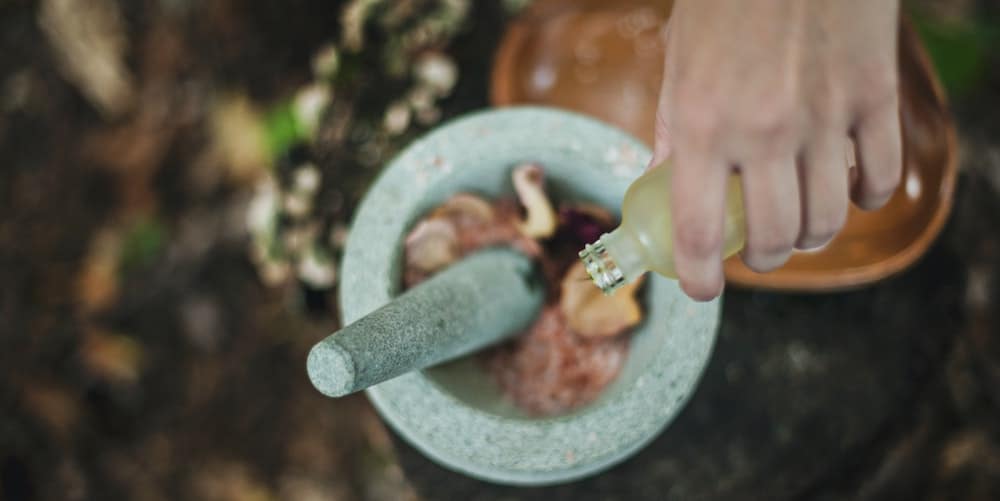Truly a medical revolution, antibiotics have marked a turning point in the fight against infectious diseases. However, taking antibiotic medication can lead to significant side effects and generate rather concerning antibiotic resistance phenomena.
Numerous studies have been conducted to highlight the antibacterial properties of natural substances. A natural antibiotic does exist! We present 10 of them here. Join us after the list to fully understand how antibiotics work.
Note: Even if they are natural, these substances should be used with caution, paying attention to drug interactions. Never stop an antibiotic treatment prescribed by a doctor.
Garlic

It is the quintessential natural antibiotic! This bulb, widely used in cooking, is full of benefits. It is notably a prebiotic, antioxidant, and antibacterial! In the Middle Ages, it was reportedly used to combat the plague. This study suggests its effect on reducing Salmonella, Escherichia coli, and Listeria populations. Its use is also studied for the treatment of multidrug-resistant tuberculosis. Ajoene, a sulfur compound in garlic, presents antibacterial properties that according to this study, would help reduce chronic infections.
How to consume: You can chew one to two cloves of garlic per day in case of respiratory infections. Garlic can also be consumed as an infusion or decoction. For skin infections such as warts, creams containing ajoene can be found in some stores. It is also available in powder, capsule, or oil form.
Manuka Honey
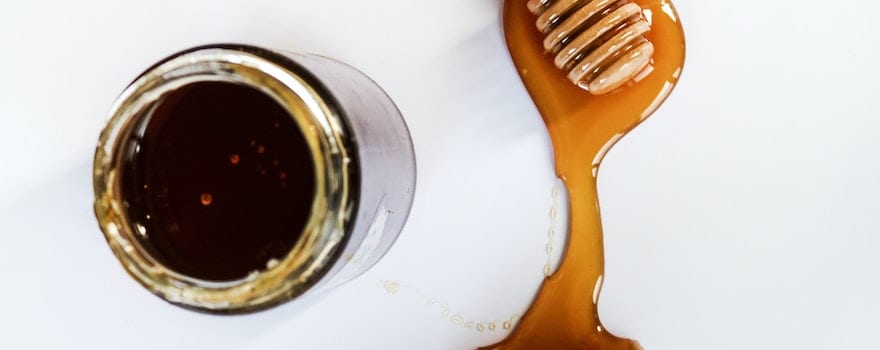
It is a dark honey with a particularly strong flavor. Its name comes from the tree it grows on in New Zealand. It is particularly concentrated in methylglyoxal, a powerful antibacterial substance. The UMF index, “Unique Manuka Factor” measures its antibacterial effect and methylglyoxal content. This study suggests its effect on multi-resistant infections. It is also used to relieve acne symptoms.
How to consume: It is preferable to choose honeys with a fairly high UMF index. For acne treatment, it can be applied as a thin mask on the face. One can also enjoy one to two teaspoons per day to combat ENT infections such as tonsillitis. A great way to enjoy its delicious caramelized taste!
The Neem Tree
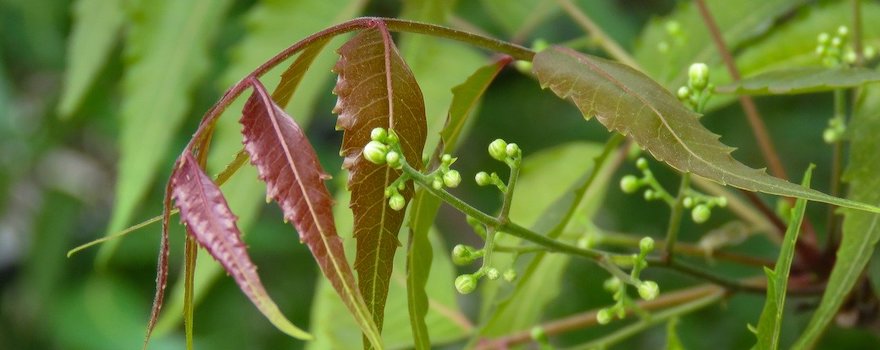
The neem is a tree native to India. It is one of the flagship plants in Ayurvedic medicine. Its antibacterial action is attributed to nimbidin, a compound extracted from its seeds as stated in this study. This other study presents its beneficial effect on bacteria like Escherichia coli and Salmonella. It should be used with caution to avoid any toxicity or danger.
How to consume: Opt for a concentrated organic oil. It is usually used as oil to soothe skin issues like acne or fungal infections. It will relieve infections while providing softness to the skin. For acne, it can be used synergistically with clay.
Tea Tree

The tea tree is native to Australia. An oil is extracted from it that has been used for centuries by the aborigines. It’s been brought back into the spotlight due to the burgeoning problem of antibiotic resistance these days. Its essential oil is a star in aromatherapy, used to relieve numerous infections! This study as well as this other study analyze its antibacterial properties.
How to consume: To soothe acne or eczema, it is recommended to dilute the essential oil of the tea tree in a vegetable oil. In case of tonsillitis, gargling can be done. To combat digestive disorders like parasitosis, ingestion is possible. Refer to a therapist in all cases for monitored consumption!
Ginger

Here is an excellent natural antibiotic. Ginger is a rhizome native to India. It is one of the pillars of traditional Indian medicine. Its antibacterial action is believed to be due, according to this study, to its volatile compounds such as borneol or camphene. They would act on a wide range of bacteria including Salmonella and Escherichia coli.
How to consume it: Ginger can be consumed as a decoction or in infusion. It is also available in the form of juice and powder. Ginger essential oil helps remedy ailments like sinusitis or bronchitis.
Echinacea
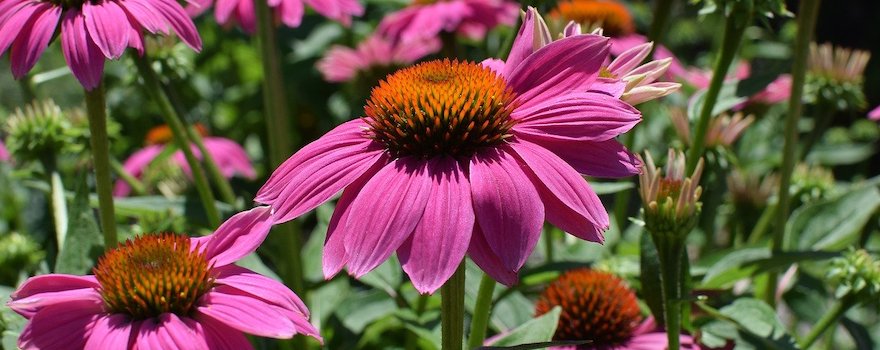
It is a pretty plant with pink petals. Originally found in the plains of North America, where indigenous people used it to treat various ailments. Consumed preventively, it would boost the immune system and help the body fight against bacterial infections! This study examined the action of Echinacea purpurea extract on a wide variety of bacteria including Legionella pneumophila.
How to consume it: It is quite easy to find in the form of capsules or tablets. You can also drink it in teas using its roots, leaves, or flowers. In case of infections, it is recommended to take it as a course.
Goldenseal
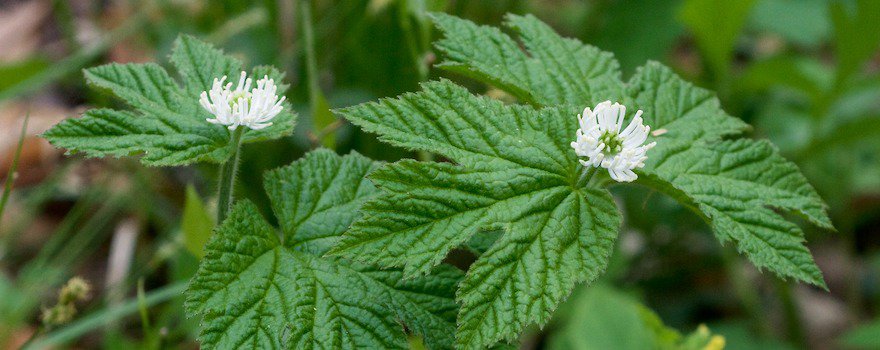
It is an American plant whose wild version is endangered. In Canada, for example, the roots and rhizomes of this plant must come from a cultivated form to be processed. Several studies have demonstrated the broad-spectrum antibiotic effects of this plant against bacteria and fungi. Berberine is the compound in this plant that is believed to give it its valuable properties.
How to consume it: Generally consumed internally, its root is ground and is available in the form of capsules. It can be used in case of bronchitis or urinary infection. It is also available as a tincture, which can be used as a gargle or to relieve ENT infections.
Turmeric
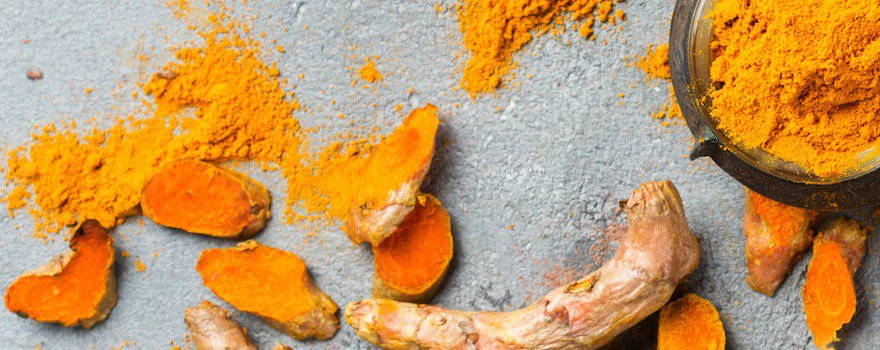
A plant native to India, turmeric is part of the same family as ginger. This spice is widely used in cooking to give a gentle flavor and a remarkable color to many dishes. But it is also used externally on the skin to take advantage of its antibacterial properties. This study presents its action on a type of methicillin-resistant staphylococcus.
Also read the Our advice for buying turmeric capsules
How to consume it: There is turmeric essential oil which can be applied to the skin by diluting it in a vegetable oil. It will relieve acne or skin fungus for example. In case of gingivitis, you can make a homemade mouthwash with turmeric powder.
Royal Jelly
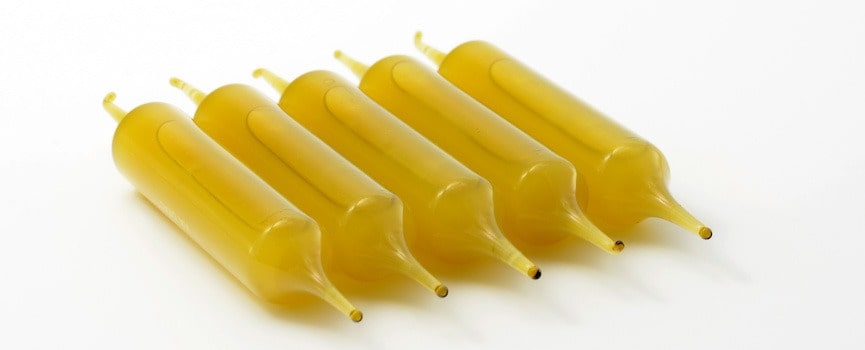
Royal jelly is a milky substance secreted by bees to feed the prestigious residents of the hive (the queen and the larvae). It is particularly recommended to boost the immune system to protect the body from viral and bacterial attacks! This is thanks to the action of fatty acids and proteins such as Major Royal Jelly Proteins. This study highlighted the antibacterial action of various compounds in this jelly. It is a recognized natural antibiotic.
How to consume it: You can enjoy spoonfuls to take advantage of its slightly tangy taste and antibacterial properties. It can also be applied externally to fight against acne, for example. For more effectiveness, it can be consumed as a course, it is generally available in ampule form.
Cloves
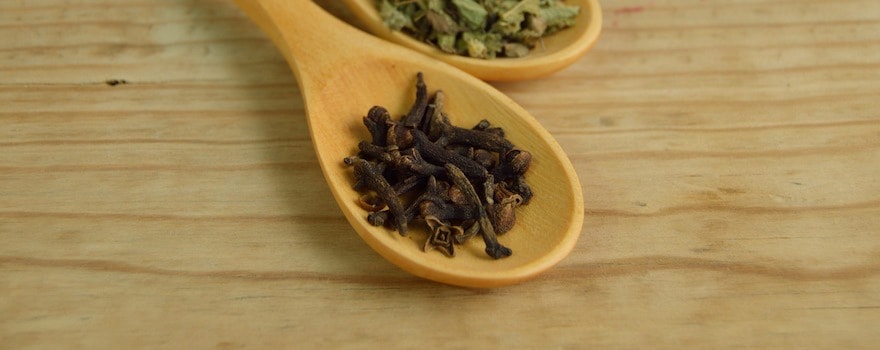
Cloves are the flower buds of a tree native to Indonesia. They contain eugenol, which has antibacterial and antifungal properties. This study presents their action on many types of bacteria. This other study highlighted the effectiveness in reducing bacterial activity of a mouthwash based on these cloves, tea tree, and basil.
How to consume it: Clove is mainly used in the form of essential oil. It can be used diluted in a vegetable oil in cases of urinary or respiratory infection. It can also be consumed as an infusion or decoction.
Antibiotics, substances derived from natural sources
Bacteria, the targets of antibiotic action
A bacterium is a microscopic living organism, on average, its diameter is fifty times thinner than a hair! They are the first living beings on Earth! Skin, mouth, intestine, vagina… Microorganisms colonize all these parts of the human body.
Fortunately, coexistence with these germs is often peaceful and harmless. In the intestine, for example, bifidobacteria act beneficially, by strengthening the immune system and protecting the intestinal barrier.
They are also ubiquitous in our environment, this study reveals the massive presence of bacillus or staphylococcus type bacteria on computer keyboards! But some bacteria can enter the body and cause bacterial infections such as tuberculosis or Lyme disease.
Their danger is increased by the fact that they can multiply at a rapid pace! When the immune system fails to fight a bacterial infection, antibiotics are often used.
The recent discovery of antibiotics
When we say antibiotics, we often think of synthetic substances used in modern medicine, yet antibiotics stem from natural substances!
An antibiotic, from the Greek “anti”, against and “biotikos”, relating to life, is a substance that allows the elimination or reduction of a population of bacteria. They have no effect on viruses or fungi. Therefore, they will be useless and ineffective, for example, in treating viral angina.
And yes, we all have in mind the catchy slogan “antibiotics, it’s not automatic”. The antibiotics commonly used are produced from molecules naturally synthesized by microorganisms. Others are designed in a 100% synthetic way.
Penicillin, which comes from mold of a fungus, is considered the first among them. It was extensively used during World War II to combat wound infections like gangrene!
From medical revolution to the issue of antibiotic resistance
The discovery of antibiotics has increased human lifespan with the near-eradication of infectious diseases such as tuberculosis or cholera. They are widely used to overcome bacterial-origin infections like tonsillitis or urinary tract infections.
However, their massive use has led to forms of bacterial resistance. Specifically, the bacteria that survive an antibiotic treatment are the ones best equipped to defend against this substance. This may lead to making drug treatments less effective! Antibiotic resistance is considered by the WHO as a major scourge of the 21st century.
Moreover, prescribed antibiotics do not differentiate between harmful, pathogenic bacteria and beneficial, harmless bacteria. It is generally advisable to consume probiotics and prebiotics during an antibiotic treatment. Prebiotics will soften the damage antibiotics may cause to the intestinal flora, and probiotics will act as a fuel to enhance their beneficial action.
Natural antibiotics, a proven antibacterial action
A natural antibiotic contains substances with proven antibacterial efficacy. One advantage of a natural antibiotic compared to classical forms is that it causes fewer side effects. It also reduces allergy risks as the body sometimes considers classical antibiotics as dangerous foes to be neutralized.
Some natural antibiotics like garlic offer great prospects in the fight against multi-resistant bacteria! They help combat certain types of bacteria while boosting our immune system. However, these substances should be handled with caution due to potential interactions with medications.


